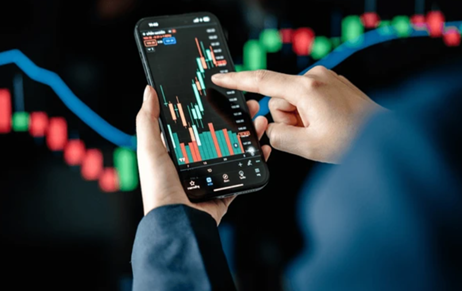The history of cryptocurrency and blockchain innovation makes a new history of unprecedented financial innovation.…
The Role of Blockchain in Protecting Intellectual Property Rights in India.
INTRODUCTION
Protecting IPR in the present digital age and era of rapid technological changes is becoming more central. With their creative and innovative work, India needs to have effective mechanisms for safeguarding rights. Blockchain technology is the decentralized and immutable ledger system promising a new age of managing and protecting intellectual property. Blockchain provides a unique answer to several problems that Indian creators and innovators face, including those pertaining to ownership verification, licensing, and infringement enforcement. This blog post examines how blockchain technology could help protect intellectual property rights in India, including its features, benefits, disadvantages, and prospects for Indian creators.
Because blockchain is immutable, decentralized, and tokenized, some intellectual property rights can be effectively protected. Its unchangeable nature provides the technology with an unalterable history of creation and ownership. For an intellectual property owner, this is important because no one else can dispute an ownership claim. Besides its layer of protection, a smart contract with blockchain can be used to license works and collect royalties.
UNDERSTANDING BLOCKCHAIN TECHNOLOGY
It is a kind of decentralized ledger technology, which securely records the transactions in many machines called blockchain. Every transaction is formatted into a “block” that creates links between blocks coming before it and forms a “chain.” Blockchain is very secure and unbreachable as a result of its structure since it ensures once data gets recorded, no one will alter it without reaching a network consensus.
The data is stored in isolated, encrypted blocks that link up into chains. These hash points will form a chain, or a blockchain, by linking these blocks up. These blocks are what consist of distinct transactional data, and they’re independently time-stamped. If the ledger becomes decentralized, it means no new transaction would be feasible unless its members agreed with that network.
TYPES OF BLOCKCHAIN TECHNOLOGY
- Public Blockchains: Open to anyone, completely transparent. Examples include Bitcoin and Ethereum.
- Private Blockchains: Only limited access is allowed where only selected participants can authenticate transactions. Businesses often use it for internal operations.
INTELLECTUAL PROPERTY RIGHT
IPR is an important legal right that protects the form of the mind. They provide people and firms with the chance to control and make money out of their intellectual property-it could be names, designs, inventions, original works of the mind, or symbols applied in business. Anyone having innovative or creative work is likely all to require such education on IPRs as they give them a framework with which to safeguard their works and make some money from those produced ones.
The ownership of intellectual property rights brings about a natural consequence of that right, namely a limited monopoly in the protected property. Typically, intellectual property rights conferred upon the inventor, under most legislation governing the IP right in issue, usually extend the inventor’s exclusive right to use his product for some time determined by that legislation.
TYPES OF INTELLECTUAL PROPERTY RIGHT
Trade Secrets: Trade secrets is any confidential business information that has given one a competitive edge. Examples include formulas (such as the secret recipe of Coca-Cola), practices, processes or anything that is not publicly known.
- Patents: Protect inventions and processes for a limited period of time.
- Copyrights: Protects the original works of authors like music, literature, and art.
RIGHTS TO BLOCKCHAIN AND INTELLECTUAL PROPERTY
Due to blockchain technology being secure, immutable, and represented in tokens it is being more and more used for protecting intellectual property rights. However, IP rights are taking a challenge to protect blockchain by providing blockchain owners property rights. This chapter shall examine the symbiotic relationship between blockchain technology and intellectual property rights.
BLOCKCHAIN’S FUNCTION IN SAFEGUARDING INTELLECTUAL PROPERTY RIGHTS.
Blockchain technology is revolutionizing the protection of intellectual property rights as it brings new, innovative solutions in the management of digital assets and simplifies complicated transactions. Version control in blockchain is one of the greatest strengths, especially for digital assets like patents, research articles, and copyrights, which are updated many times in their lifetimes. By linking asset versions into an immutable ledger system, blockchain allows all versions of an asset to be securely accessed, thus creating a clear history of changes and ensuring recognition of the latest version.
ROLE OF INTELLECTUAL PROPERTY RIGHTS IN THE PROTECTION OF BLOCKCHAIN TECHNOLOGY
IPRs, or intellectual property rights, are important to ensure preservation of blockchain technology because these entail legal protections that foster innovation and safe ownership of digital assets. As blockchain technology evolves, effective IP protection becomes ever more important for protecting the work and inventions of developers and creators.

Blockchain technology has some characteristics like immutability, security, and decentralization. Features that would make it impossible to delete or alter data once it’s stored on a blockchain; this makes it a good method for proving provenance and ownership of digital goods. Intellectual property rights, however, intend to protect mental works, such as designs, inventions, and artistic achievements. In brief, this combines the two towards bringing an excellent framework toward the protection and ensuring safety of changes within the digital world.
Protection by IPR within Blockchain Technology
Patents: Creations regarding the blockchains are patent covered wherein it bestows temporary but exclusive right to use its respective inventions to the creators, so their inventions are bound not to use without permission due to such security, making sure inventors can avail all earnings from their invents as well as preventing people to use them on self-convenience.
Copyright Protection: In addition to providing legal solutions against unauthorized reproduction or distribution, its will be copyright protection for the works such as software code and any creative work on blockchain applications.
Trademark Protection: It would protect the names, logos, and symbols of brands behind blockchain projects from confusion and deception because it creates authenticity in the products and services sold within an increasingly competitive marketplace through trademark protection.
GOVERNMENT BLOCKCHAIN INITIATIVES IS INDIA
Indian government recently garnered much attention with an intent to push the country’s economy digital. Numerous policies have been rolled out already and in process to adapt new technology to be considered as most innovative and state-of-art. NITI Aayog – the National Institution for Transforming India is considered India’s think tank with the ability for innovation, crucial knowledge, and entrepreneurship in its nation. It’s looking at the implementation of blockchain and artificial intelligence, or AI, into pretty much everything, whether land records, education, health care, agricultural practices.
CONCLUSION
It can have a very promising potential to enhance the protection of the rights of creators in the Indian intellectual property landscape, since blockchain technology can mitigate the risks of IP infringement significantly by providing secure proof of ownership, facilitating smart contracts, and improving the enforcement mechanisms. However, to realize its full potential, it will be very crucial to address the legal challenges and foster awareness to protect intellectual property rights all over India.
Author: SUGAM, in case of any queries please contact/write back to us via email to chhavi@khuranaandkhurana.com or at IIPRD.



